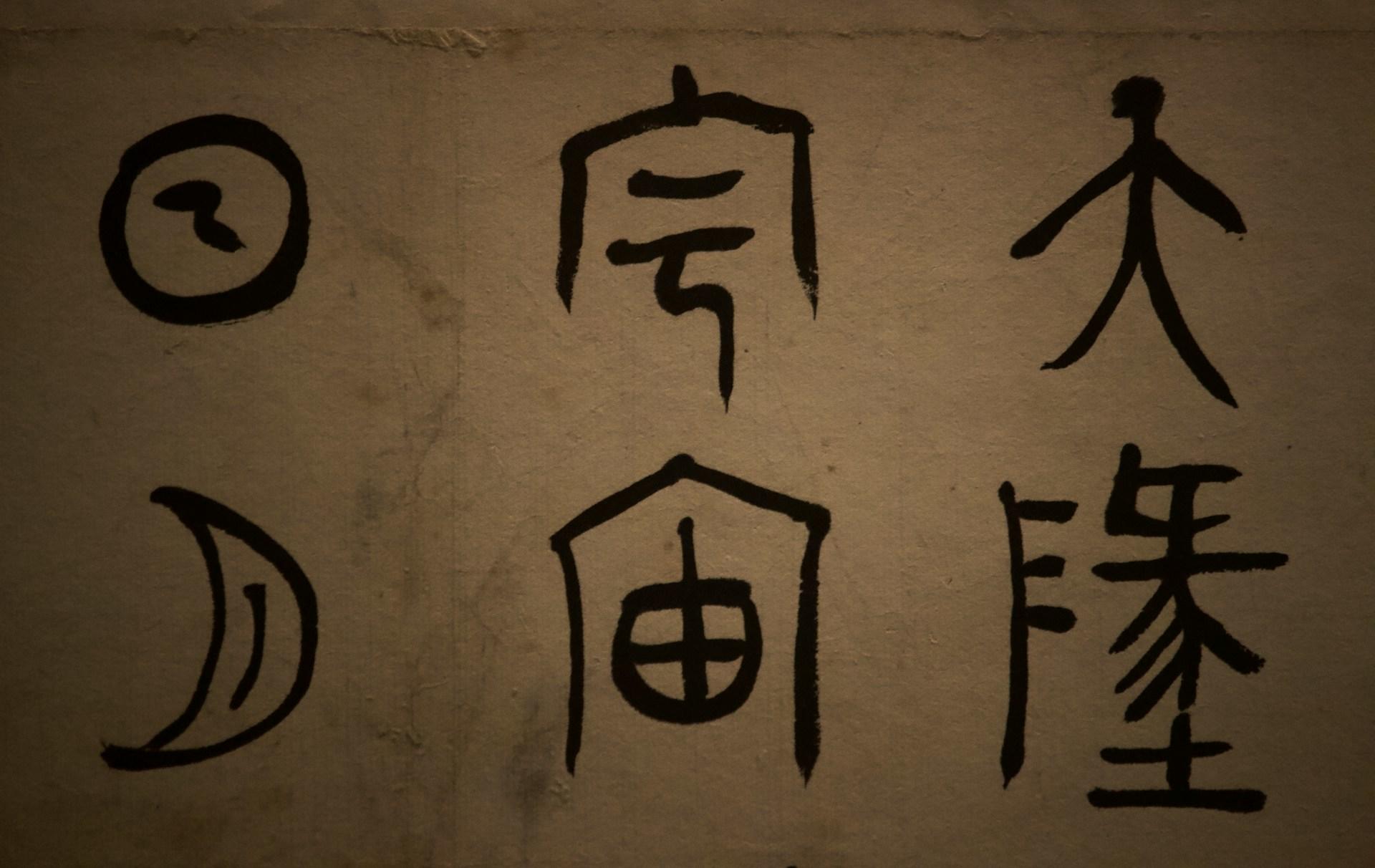People often say that learning Chinese as a second language is difficult. They point to its unique writing system and the ominous-sounding 'four tones' as proof of Mandarin Chinese complexity. However, this Mandarin speaker assures you that learning Mandarin is not as hard as those naysayers make it sound.
In fact, adjusting your attitude to learning Chinese is your first step towards mastering the Mandarin tongue. When people believe a task is difficult, they erect a psychological barrier to their success. Thus, thinking about studying Chinese in terms of how strenuous it must be is self-defeating.
We're excited to present Mandarin language facts, as well as tips and tricks for learning Chinese. In this article, we lay out the steps for understanding Chinese language mechanics and mastering its tones. We'll also help you understand the Chinese writing system and how to place every Chinese character into its radical group.

How to Learn Mandarin
Mandarin is a millennia-old language; far older than the tongue we use to communicate. It has remained fairly static over time; many of the characters used 5000 years ago are still in use today. However, Ancient Chinese is difficult to read even if you know those fundamental Chinese characters. That writing style uses no punctuation and it reads top-to-bottom, right-to-left.
Around the 1950s, Chinese hanzi - the name for Chinese characters, underwent a change. Traditional Chinese characters are complex, difficult to memorise and even harder to write. By contrast, simplified characters are easier to read, learn and remember.
You needn't learn traditional and simplified characters if you plan on living and working in mainland China. There, simplified characters are the norm. However, Hong Kong, Taiwan and Singapore still use traditional Chinese characters. If your plans involve those locales, focus on learning that set of characters, instead.
You might fret over the cost of private Chinese lessons but you needn't worry about learning every single Chinese character. To make learning Mandarin even easier, this language has around 400 syllable sounds - li, ni, pa and the like. That number grows to around 1300 when you factor in the tones.
Most Mandarin learning books insist that this language has four tones. That's true for most of Chinese vocabulary but it overlooks the 'no tone'. Speakers use no-tone for ending particles like de (的), le (了), ge (个) and ma (吗).
As an absolute beginner student of Mandarin, your textbooks will include two writing systems: characters (hanzi) and hanyu pinyin. The latter script uses the letters that you're familiar with, along with diacritical marks to indicate what tone you should speak that syllable in. Even children's books in China present this dual script system so young readers can match the character to the sound it makes.

Best Way to Learn Mandarin
The debate rages over whether Mandarin students should only learn Chinese pinyin or focus on Chinese characters. The best Chinese teachers are in the second camp. Reading pinyin causes unnecessary confusion once you've mastered the characters' tones.
The tones in question are mā - a high, flat tone, má - a rising tone, mă - a falling-rising tone and mà - a falling tone. The no-tone or zero-tone is a short, flat tone. The no-tone 'må' particle above has no meaning; it indicates a question. By contrast each of these 'ma' has a meaning: mother (妈), hemp (麻), horse (马) and to scold (骂).
You'll note that, save for hemp, each of these characters includes the 'horse' character. The 'mother' character includes the pictogram for woman (女 - nü) and 'to scold' places a double mouth character (口 - kŏu) over the 'horse'. Hemp is also a two-part character: forest (林 - lín) under shelter (广 - guăng).
Understanding how Chinese characters get their meaning and sound is the key to mastering them. Many such pictograms include a radical that gives the character meaning. For instance, the no-tone 'ma' includes a 'mouth' radical, indicating something spoken. All of our 'ma's have a radical, save for 'horse'.
Chinese dictionaries are typically organised by radicals rather than alphabetically. Thus, learning Chinese radicals and what they mean is the key to grasping Chinese vocabulary. Even if you can't make out the word, as long as you can identify the radical, you'll get a sense of the word.
The Mandarin language sorts its lexicon of words into 214 different radicals. They, in turn, are organised by the number of strokes it takes to write them. A two-stroke radical like rén (人, 亻- person) appears in the dictionary before the six-stroke mĭ (米 - rice), for instance.
This is further proof that abandoning pinyin as soon as possible will help advance your studies. You won't look up words in Chinese dictionaries by the sound they make but by their radicals. It also suggests that learning Mandarin writing stroke order is crucial to learning Mandarin Chinese.
To write Chinese characters properly, you must go top to bottom, left to right and in to out. For instance, to write the 'face' character (面 - miàn), you should write the top two strokes, and then the leftmost one. Your next stroke is the top and right side of the enclosure - one stroke, after which you'll write the inside strokes. You'll finish by drawing the bottommost stroke.
As you write, you should count the strokes - 面 has nine. Knowing the number of strokes and the order to write them serves as a mnemonic device to help you remember them. It will also help you look characters up in your Chinese dictionary. You won't waste time thumbing through those pages to find the radical if you know how many strokes it takes to write it.

Learning Mandarin on Your Own
By now, you must be convinced that learning Mandarin is easier than you thought. You may realise that the hyper-logical Chinese writing system is worth further exploration. Now, you want to search for Chinese learning materials and start studying on your own.
In Chinese, 加油! (jiā yóu - literally 'add oil') is the standard encouragement. However, you have to go about it the right way.
As noted above, learning Chinese characters is essential but you need pinyin to help you master the tones. Chinese grammar is simple but that doesn't mean you've no grammar rules to follow. Finally, you have to find people to practise your spoken Chinese with.
Securing learning materials is easy. You can search the internet for beginner Chinese worksheets and tutorials; you should also find Chinese textbooks at your local library and bookstore. While you're browsing, be sure to snag a Chinese character dictionary. Preferably one that shows the characters' stroke order.
As long as you're shopping, you may as well stock up on study supplies like markers, sticky notes and a planner. The first step to beginning self-study is setting learning goals and devising a study plan. Many autodidacts find dry-erase wall planners the best way to keep track of their learning time.
Next, you'll need to create an immersive environment. Hearing Chinese music and listening to podcasts in Chinese helps you train your ear to this language's tonal qualities. Even if you don't (yet!) understand a word, you'll gain a sense of Mandarin's flow.
You should also embrace Chinese cultural elements. Short of moving to China, the best way to get an insider's look at life in China is by watching Chinese films and television shows. Of course, if you're planning on a trip to Singapore, Taiwan or The Philippines, you should watch those countries' shows.
Don't forget YouTube! This platform features full-length Chinese films and serials, complete with English subtitles. As a beginner learner, you need those but soon, you will turn to one of China's many video streaming platforms. Youku, Sohu, iQiyi and 56.com are sites to browse; some of their videos even include English subtitles.
In a pinch, you can always use smartphone apps for a quick translation. Some language learning apps can even help you with thorny Chinese vocabulary problems like word order. They can also help you master Chinese pronunciation.

Learn Chinese Through Language Exchange
One final tip to study the Chinese language is to find a native Chinese speaker. Languages are meant to be spoken, preferably with others. Finding a native Mandarin-speaking language partner is only as difficult as creating an Italki account. This platform offers Mandarin lessons with a Chinese teacher for a fee as well as language support for free.
Hello Talk is also language exchange platform, though it doesn't offer teacher-led Chinese lessons. This app has over one million users across the world. Once you create your free account, you may search for language partners among the thousands of available profiles.
You might prefer practising your Mandarin skills face to face. If so, turn to Superprof Mandarin tutors. Superprof boasts nearly 5000 Mandarin tutors across Australia, many of whom are native speakers.
These Superprofs will help you master Chinese grammar and vocabulary and help you polish your speaking and listening skills. You might need a Mandarin tutor to prepare for the Hanyu Shuiping Kaoshi (HSK) Mandarin language certification exam. That's also a job for a Mandarin Superprof.















